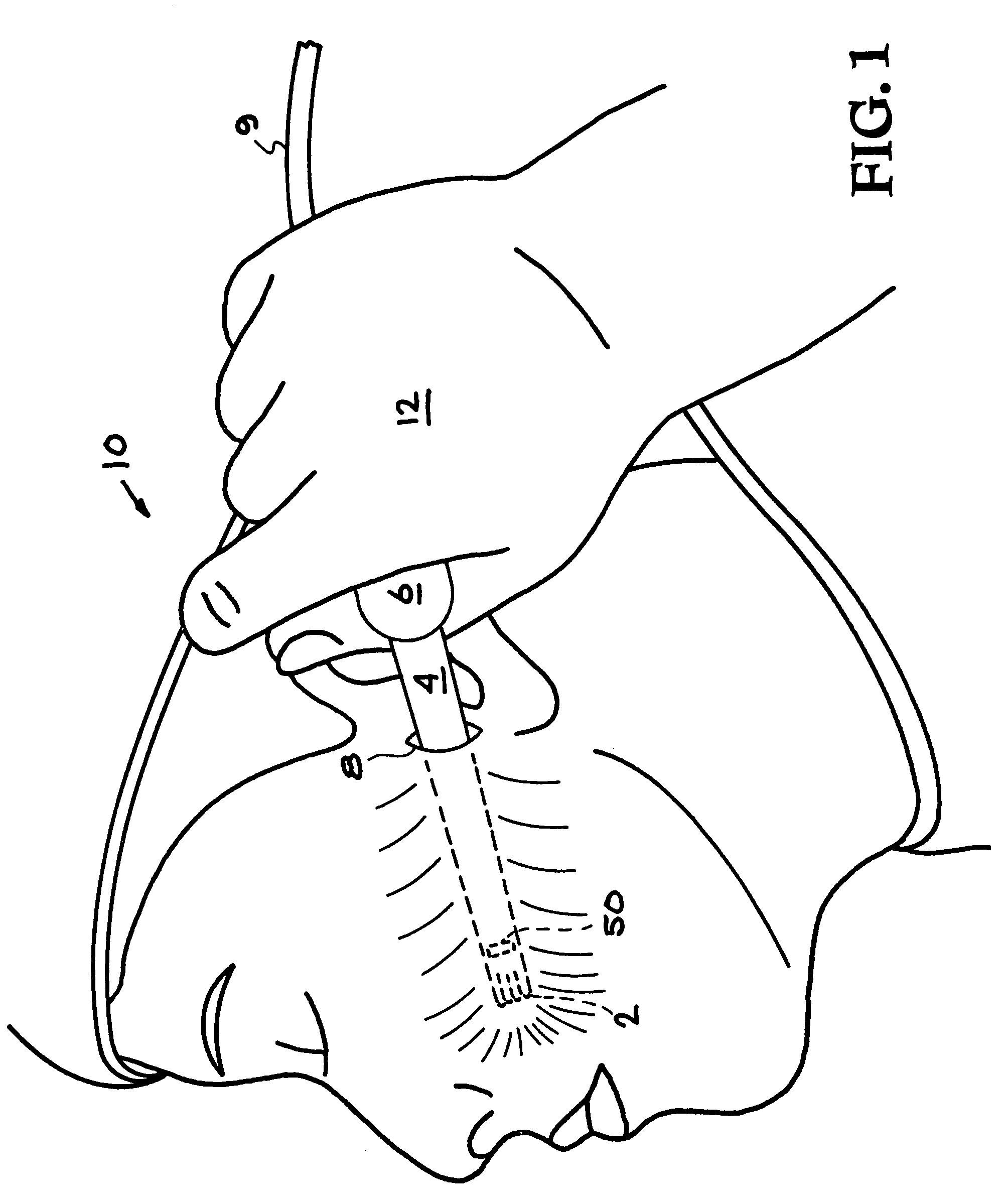Face-lifting device
a facelifting and chin technology, applied in the field of facelifting devices, can solve the problems of inability to follow or maintain the plane, difficulty in “feeling” the fibrous plane, and the risk of affecting the smoothness of the undercutting, so as to minimize the amount of tissue that has to be removed, quick and accurate facelifting or tightening maneuvers
- Summary
- Abstract
- Description
- Claims
- Application Information
AI Technical Summary
Benefits of technology
Problems solved by technology
Method used
Image
Examples
Embodiment Construction
[0080]The present invention provides a device that can be used by surgeons to provide quick and accurate face-lifting maneuvers that minimize the amount of tissue that has to be removed. The device is comprised of a hollow undermining shaft that can be easily positioned between dissection planes in tissue and then manipulated to separate tissue planes and lyse fibrous tissue. A laser light source and delivering means delivers energy to the distal end of the shaft. Embodiments of the invention provide a planar application of energy. A temperature sensor monitors the tissue temperature, and control electronics process temperature information to control the laser power for optimum tissue contraction. An optional secondary light source that is visible to the surgeon can be used to help visualize the location of the laser exit window. Optionally the device can also use ultrasound energy delivered down the shaft to improve tissue lysing.
[0081]Laser-Energized Embodiment
[0082]FIG. 1 shows a...
PUM
 Login to View More
Login to View More Abstract
Description
Claims
Application Information
 Login to View More
Login to View More - R&D
- Intellectual Property
- Life Sciences
- Materials
- Tech Scout
- Unparalleled Data Quality
- Higher Quality Content
- 60% Fewer Hallucinations
Browse by: Latest US Patents, China's latest patents, Technical Efficacy Thesaurus, Application Domain, Technology Topic, Popular Technical Reports.
© 2025 PatSnap. All rights reserved.Legal|Privacy policy|Modern Slavery Act Transparency Statement|Sitemap|About US| Contact US: help@patsnap.com



